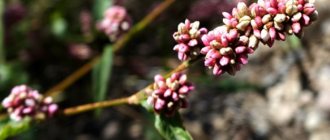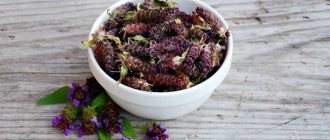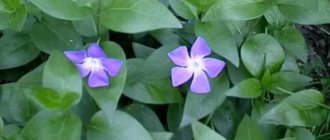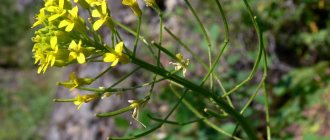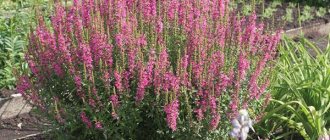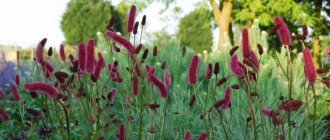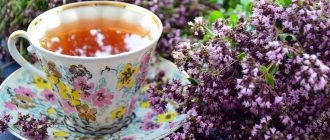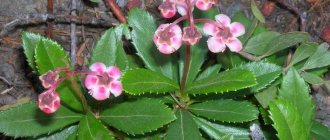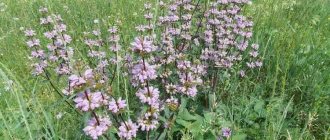Useful properties and uses of willow weed
Useful properties of plakun
The chemical composition of the weeping grass contains phenol carbonic acids, tannins, essential oil, resin, flavonoids, vitamins, and there are traces of alkaloids.
The roots contain saponins, and the flowers contain anthocyanins. To use herbs for medicinal purposes, leaves, flowers and roots are collected. The collection of the above-ground parts of the plant is carried out before flowering begins; it is advisable to dig up the roots in the fall. The raw materials are collected and dried in a well-ventilated area, stored in a dark, dry place for no more than a year. Weeping grass is an excellent honey plant that attracts many bees and butterflies in July with its bright, beautiful flowers. Honey collected from this herb is very aromatic, it has a slightly tart taste and rich color.
Application of the plakun
The plant is widely used in folk medicine as a hemostatic, anti-inflammatory and tonic. An infusion of flowers is recommended as an astringent for diarrhea and dysentery. Decoctions and infusions from the leaves are good for epilepsy, nervous disorders, rheumatism, catarrh of the stomach and intestines, and hemorrhoids. The whole dry plant can be used for insomnia. Treatment with plakun-grass gives a positive result for uterine bleeding, gastritis, enteritis, and colds.
The plant is also effective in helping with cardiovascular diseases and some skin diseases (eczema, dermatitis). To ensure quick and painless healing of wounds, a paste of fresh herbs should be applied to the sore spot. For painful feverish conditions and general weakness of the body, herbal tea will be useful.
One of the most important medicinal properties of plakun is that the plant effectively counteracts cerebral edema when bitten by an encephalitis tick.
Plakun infusion: to prepare the infusion, you need to pour 10 g of dry herb into 250 ml of boiling water, leave for at least four hours, then strain through a very fine sieve. To improve the general condition of the body, it is recommended to drink the infusion 3 times a day, 25 mg.
Weeping flower
Weeping grass is famous for its beauty. Thickets of plants in natural conditions and in flower beds look extremely beautiful. The straight, tall stem is densely dotted with lilac or pink flowers, collected in decorative pyramidal inflorescences. The plant blooms from June to the end of September.
Plakun flowers are widely used in folk medicine. They contain tannins, pectin, carotene and other bioactive compounds. Tea made from flowers helps with headaches, decoctions and infusions with their addition are used for stomach and intestinal ulcers. Once upon a time, the flowers of the plant were in demand in cooking as a food coloring.
Weeping willow
This perennial plant with a straight dark green stem reaches a height of 100 cm. Its leaves are opposite, elongated and pointed in shape. Small beautiful flowers are collected in a thick spike-shaped panicle. The fruits are oblong, double-leaf capsules. The willow-leaved weepingweed blooms in June-August. This plant is widespread throughout almost the entire territory of the European part of Russia, Belarus and Ukraine. Preparations made from it are widely used in folk medicine.
Article on the topic: Indigo - beneficial properties, description
Weeping willow has restorative, tonic, anti-inflammatory, wound-healing, analgesic, astringent and hemostatic properties. Decoctions and infusions from it help with chronic colitis and enterocolitis, various bleeding, nervous diseases, epilepsy, typhoid. They are used externally for neuroses, varicose veins and sexually transmitted diseases. In the old days, it was believed that this herb was an antidote to the bites of snakes and rabid animals.
Contraindications to the use of plakun
Plakun is not toxic. It is contraindicated to take its drugs only in cases of high blood clotting and a tendency to thrombus formation. You should also be careful when using this herb for people suffering from gastrointestinal diseases, especially with atonic constipation. Preparations from the plant can constrict blood vessels, so hypertensive patients should carefully monitor their blood pressure when using them. It is undesirable for pregnant and lactating women to use decoctions and infusions.
Education: Diploma in General Medicine and Therapy received from the University named after N. I. Pirogov (2005 and 2006). Advanced training at the Department of Herbal Medicine at the Moscow People's Friendship University (2008).
Weeping grass or loosestrife (Lythrum salicaria) is a herbaceous plant of the perennial genus; it has a long and straight stem up to 120 cm high. The leaves of this plant are elongated and pointed towards the tips. The leaves grow in bunches of three. Plakun flowers are small, mostly with 6 petals, beautiful bright red or crimson colors, they grow along the entire stem in the form of a spike. The fruit of the flower has an ovary resembling a capsule, where the seeds are placed. Plakun blooms in mid-July, and the fruits begin to appear in the month of August.
This plant can be found in almost all regions of the European part of Russia, Belarus and Ukraine. Because this plant prefers more moisture and a lot of light, it can probably be seen near bodies of water, in a swamp, next to lakes and ditches. Plakun can grow on the same soil for many years and is not afraid of winter frosts. In Russia, about 15 species of weeping grass are counted. Drops of juice are dripped onto the ground from the narrow leaves of the grass, as if the Mother of God cannot calm down from grief, and the grass is crying with her. When Jesus Christ was crucified, the Holy Mother of God, crying, rushed to the Jordan River, dropping her tears on this grass. Since then, transparent droplets have been dripping from the long spike-shaped panicles of crimson flowers.
LiveInternetLiveInternet
This is what people call loosestrife, or weeping grass. Surely many of you have seen this plant, but simply did not know that it was a loosestrife. On its tall stems there are long crimson clusters. And from the tips of the leaves, similar to willow leaves, droplets of moisture flow down, their dripping intensifies before the rain. They can fall quietly, like tears, even on sunny days.
According to popular beliefs, weeping grass relieves illnesses, frightens evil spirits, making demons and witches cry. In the old days, there was a special prayer for digging up the root of the weeping grass. It had special power if dug up at the dawn of Midsummer. It was necessary to dig with a bone shovel, because any metal object negated the magical power of the root. It was also believed that weeping grass helps to find treasures and drives away kikimora. And if you put the root of the house, it will drive out the unfriendly bannik and the brownie. If they suit the owners, then the root should not be placed in the bathhouse and at home, but stored, for example, in a barn. They also believed that the grass of loosestrife, carried with oneself, conquers all spirits. And according to the biblical legend, the weeping grass grew from the tears of the Mother of God when she sobbed, looking at her son on the cross: “When... Christ was crucified, his most pure blood was shed. Then the Most Holy Theotokos, after her son, dropped tears on the mother’s damp earth... And from those tears the Weeping Grass was born... From the Weeping Grass demons and sorcerers cry, it humbles the power of the enemy, destroys evil sorcery, drives away lessons and influx from a person.” And according to another legend, the merlin grew from abandoned Cossack torches. These torches were in the hands of the free Volga and Don Cossacks, who walked along the rivers in skiffs and plows. Sailing far out to sea, the Cossacks often returned to the shore at night. When the sky was clear and cloudless, the Cossacks navigated by the stars, but when the stars were not visible in the sky, they lit torches to attract the attention of the lighthouse on duty and avoid collisions with reefs. With these torches in their hands, the Cossacks went ashore and threw them right there on the ground. And the torches sprouted purple flowers. Flowers mourn parting with the Cossacks, therefore, during heavy dew, transparent tears drip from the flowers. The scientific name for loosestrife is Lythrum, meaning “clotted blood.” Common names: wild cornflowers, shag, loosestrife, willow-grass, water squeak, hardwood, troichak, dubnik, coaster.
Loosestrife - Lythrum salicaria - is a perennial herbaceous plant from the loosestrife family.
The loosestrife has a thick, woody root.
The stem is straight, ribbed, 50-100 cm high, covered with stiff hairs. The leaves of the loosestrife are divided into lower ones, arranged in threes in a whorl, middle ones - oval, with a blunt apex, and apical leaves with an elongated apex. All leaves are covered, like the stem, with stiff hairs. The deep lilac or purple petals consist of six petals and are collected in long inflorescences at the ends of stems and branches. Merlin blooms in July-August. Bees and butterflies always circle above it, since the weeping grass is an excellent honey plant. On fine summer days, the loosestrife produces abundant nectar from morning to evening; 100 flowers of the plant produce nectar containing 18 mg of sugar per day. Derbennik honey has a unique pleasant taste with a slight tartness, a delicate aroma and a dark amber or golden-green color. Some beekeepers specifically transport hives closer to places where loosestrife blooms en masse. The fruits of the loosestrife are oblong-oval, are two-locular capsules 3-4 cm long, and ripen in August-September. There are more than 15 species of loosestrife in Russia, but the most famous and most often seen is the loosestrife. It grows almost throughout Russia, including in Siberia, the Far East, the Caucasus along the banks of rivers, lakes, in ravines, in swampy meadows, on the edges of forests, among bushes in damp places, in alder thickets, in crops and on drained peatlands. It often grows in whole clumps and has a very beautiful appearance. In general, loosestrife is an ornamental plant, so summer residents began to quite often plant it on their plots in moist places. Merlin is also a medicinal plant.
For medicinal purposes, the herb loosestrife (stems, leaves, flowers) is used, which is harvested during flowering, and the roots, which are dug up in the fall.
The roots of the derbennik contain: saponins and tannins. The aerial part of the plant contains: vitamin C, carotene, glucose, glycosides salikarin, litrin, tannins, essential oil, mucilage, resin. The following were found in the seeds: alkaloids, glycoside litrerine. Preparations from loosestrife have: anti-inflammatory, antibacterial, analgesic, wound-healing, diuretic, astringent properties. In folk medicine, decoctions and infusions of loosestrife are used for diarrhea, dysentery, chronic catarrh of the stomach and intestines, fever, gastralgia, colic, gastroptosis, colds, headaches, general weakness, as an antidote for bites of rabid animals and snakes, and for venereal diseases . Derbennik is used in homeopathy. By the way, herbal tea is effective for bad mood, hysteria, and depression. For nervous diseases, a decoction of the weeping herb is added to baths, and children are bathed in it for convulsions and various external bleedings. Fresh crushed leaves of the weed grass are applied to cuts and wounds. For weakness and nervousness,
brew ½ teaspoon of crushed dry herb of loosestrife with 1 cup of boiling water, leave in a thermos for 3 hours, cool, strain, take ¼ cup 3 times a day before meals.
For diarrhea and stomach pain,
1 tbsp.
pour 1 cup of boiling water over a spoonful of dry crushed herbs, leave for 1 hour, strain, take 1 tbsp. spoon 3 times a day before meals. For headaches
1 tbsp.
pour a spoonful of herbs into 2 cups of boiling water, leave in a thermos for 4 hours, strain. Take 2 tbsp. spoons 3 times a day before meals. You cannot use merlin preparations for hypertension, high blood clotting, a tendency to thrombosis, or for gastrointestinal diseases with atonic constipation. In the old days, fishermen soaked their nets with a decoction of grass and weeping plant roots so that they would not rot for a long time and would serve reliably. Animals do not eat loosestrife, but confectioners used juice from the weeping grass to color baked goods. Magicians recommend putting grass at the head of the bed for capricious children who often cry and sleep poorly. Magicians recommend that adults carry weeping grass with them in the form of an amulet; it protects against accidents, slander, unkind people and negative energy. Merlin flowers on the plot and in a vase bring peace and trusting relationships between household members to the house. Author: Natalia Antonova
Harvesting and storage of weeping grass
It is most favorable to collect the raw materials of Plakun-grass during its flowering (the second half of July) on the holiday of Ivan Kupala, immediately at dawn. The top part of the plant is cut off and dried in a darkened room (possibly in attics). The plant needs to be spread out in a thin layer or suspended from the ceiling with not very large brooms. After drying, the raw material is crushed into dust and stored in paper bags. The roots of these plants can be dug out of the ground by the end of September or beginning of October.
Use in everyday life
All varieties of loosestrife are attractive to bees and butterflies. It is an excellent honey plant. Derbennik honey is dark amber, very aromatic, with a spicy tart aftertaste. In warm weather, loosestrife flowers secrete nectar throughout the day, and 100 flowers of the plant produce nectar containing 18 mg of sugar per day.
Juices from fresh grass Plakun grass are used to impregnate fishing nets to protect them from rotting.
The roots of the plant are used to tan and dye leather brown.
Flowers can be used by confectioners as a natural food coloring for their products.
It is recommended to cut a cross from weeping grass and wear it around your neck. The fact is that crosses have been a powerful symbol of strength since ancient times. And if any plant endowed with magical powers is clothed in the shape of a cross, its protective ability increases several times.
Merlin (weeping grass) protects my house from the evil eye
There is one unique plant growing in my garden, the magical properties of which people knew about a thousand years ago. This is loosestrife, or weeping grass. People say that he grew up in the place where the tears of the Mother of God, shed by her at the cross with her crucified son, fell. This belief appeared, apparently, due to the fact that droplets of water, similar to tears, appear on the leaves of the weeping grass.
The merlin is very moisture-loving. I learned about this experimentally. One bush grows in a sunny place, the other in the shade of a fence, where my water pipe is also leaking. The difference is huge: the “sunny” loosestrife looks pale and sad, but the one that grows in the shade and on moist soil feels at ease, blooms brightly and blooms for a long time.
Reference. When choosing a planting site for loosestrife, keep in mind that in hot summers it can easily tolerate immersion in water to a depth of 30 cm, and in the very heat it will thank you for waterlogging the soil.
The other day I went to visit my old friend. Her loosestrife grows near a pond, where there is an ideal place for it with moist soil and air. She says that it blooms in these conditions for a very long time.
Merlin is unique in that it can grow in one place for decades without losing its decorative properties. Moreover, unlike most perennials, it does not need to be regularly planted, rejuvenated and divided. Replanting and dividing the merlin is required only when the bush has grown to enormous sizes and has lost its decorative effect.
Special care for loosestrife is needed if it grows in insufficiently moist soil. For such plants, regular watering and bathing are vital to maintain soil and air moisture.
Pruning for loosestrife is also necessary. It is usually carried out in autumn or early spring, removing the entire above-ground part to the very root. During the season, you can also carry out formative pruning, giving the bush the correct shape and density, otherwise the bush will look more like a flowering shaggy broom.
Like all flowering plants, it is necessary to remove all faded peduncles from the loosestrife so that it does not waste energy on producing seeds.
Reference. The loosestrife is prone to aggressive self-seeding, and if you do not remove the faded inflorescences, in a year you will have to wage a merciless fight against many seedlings throughout the area.
What I also like about loosestrife is its ability to survive even in the most severe frosts, so I never cover it.
And finally: loosestrife is considered a magical plant that protects its owner from negative energy and the evil eye. The place where weeping grass grows is protected from all negativity, and if you need to relax your soul and body, collect your thoughts and let go of everything evil, place a chair or bench nearby and enjoy the purity and beauty of this plant. And also do not forget to stock up on this herb for the winter so that on cold days you can drink its decoction to restore mental balance. For example, that’s what I do.
Marina Lukoshkina
Share link:
Composition and medicinal properties of plakun-herb
- The roots of the plant have a large amount of saponin and 9% of such beneficial tannins. From the part of Plakun that is located above the ground, essential oils, resins, many types of acids and 1.5% tannins are extracted. Merlin leaves are very rich in vitamin C and phenolcarboxylic acid. The flowers also contain vitamins C, 10% tannins, the flavonoid 3,5-diglucoside myricitin, 3-monogalactoside cyanidin.
- Preparations using Plakun herbs have wound healing, analgesic, antibacterial, anti-inflammatory and astringent effects. Decoctions from this plant have a strong diuretic effect - they are used during swelling and kidney diseases.
Article on the topic: Daurian moonseed - useful properties, description
Weeping grass: a legendary plant
The common loosestrife is very widespread. It is found throughout Ukraine, in the European part of Russia, Europe, the Caucasus, and the temperate zone of Asia.
It grows singly and in thickets on the banks of rivers, lakes, ponds, swamps, in damp places, ditches and ravines.
When we see thickets of blooming loosestrife in the meadows, we involuntarily admire the fabulous beauty of this place. Flowers, like torches, burn with a cold flame.
It is not for nothing that there is a legend that this plant grew from the tears of the Blessed Virgin Mary shed during the crucifixion of Jesus Christ. Therefore, in the “Pigeon Book” it is said about it: “the weeping grass is the mother of all herbs.”
The use of plakun-herbs in folk medicine
The plant is widely used in folk medicine. It has an astringent, anti-inflammatory, wound-healing, analgesic, anticonvulsant, hemostatic, restorative and tonic effect.
Infusion of the herb loosestrife for nervous system disorders
One spoon of finely gutted herb is steamed with 2 cups of boiled water, then infused for 4 hours and filtered through a cheesecloth.
Drink a similar decoction 4 times a day before meals, 75 ml.
Tincture from the root of Plakun-herb during an exacerbation of hemorrhoids
In a glass of water, add 1 tsp of chopped plant roots. Boil for 5 minutes, after this process you need to let it sit for 1 hour.
Take a decoction of 50 g three times a day before meals.
Infusion of loosestrife flowers for migraines, diarrhea and stomach pain
Cover a tablespoon of dried and gutted flowers with 1 glass of water, boil for exactly 5 minutes, then leave for 1 hour and strain.
You need to take 1-2 teaspoons of the tincture 3 times a day before meals.
A decoction of dry herbs Plakun-herbs for uterine bleeding, respiratory and venereal diseases, epilepsy, wounds in the oral cavity, prostate diseases and adenoma
- In 200 g of water, you need to brew half a teaspoon of dried and crushed herbs. Leave for 4 hours and strain. Take this decoction, 50 ml 3 times a day before meals. After 2 weeks of taking the medicinal decoction, you can increase its saturation to 2 tablespoons per 1 glass of water.
- Alcohol tincture - to prepare a tincture, you need to take 50 g of dry herb and pour 0.5 liters of vodka or diluted alcohol. The infusion should be stored for 2 weeks. Take 30 drops 3 times a day before meals. The course of treatment lasts 4 months.
A decoction of Plakun-herb for bleeding – gastrointestinal, uterine and external
Cover 2 tablespoons of the herb with 1 liter of water and boil in a water bath for 15 minutes. Then the broth is cooled and filtered. Take 3 times a day before meals, 1 glass.
Tincture of loosestrife herb for eczema, purulent wounds and other skin diseases
Two tablespoons of dry crushed herb, pour a glass of boiling water and leave for 30 minutes, strain. Take 4-5 times a day before meals, 75 g.
Tea made from loosestrife tea for high fatigue, weakened mental and physical abilities
Brew a few pinches of chopped herbs with boiling water and drink as tea as much as you want. Be healthy.
Economic importance and application [edit | edit code]
Tannins are used to impregnate fishing nets against rotting.
In folk medicine, the root is used, and in its absence, the herb. A water decoction is drunk for uterine bleeding, as a diuretic, for sexually transmitted diseases, for flux and wounds in the mouth. A decoction of roots and herbs was used to prepare baths for bathing weakened children, as well as for children with spasmophilia. An infusion of the root is taken for colds, headaches, and as a lotion for bruises. A decoction of the root is used in folk medicine for bites from snakes and rabid animals [7].
Honey plant, gives a lot of nectar, as well as pollen. The honey is aromatic, dark yellow, tart [8].
The flowers are edible. The flowers and roots are used as food coloring and treated with vinegar to produce a very durable yellow dye for leather and paper [7] .
Used as an ornamental plant. A number of varieties have been developed [9]:
- 'Sticflamme' - purple-pink inflorescences, 140 cm tall;
- 'Zigeunerblut' - dark red, 120 cm tall;
- 'Augenwe > In tales and myths [ edit | edit code ]
Plakun-grass is mentioned in conspiracies as a means of helping to command spirits and take possession of treasures [3]. According to ancient beliefs, she makes demons cry. Amulets, including cross vests, were made from weeping grass. It needs to be collected at dawn on Midsummer's Day [4].
Chemical composition of merlin
Merlin is valued for its chemical composition, which includes many substances beneficial to the human body. So, weeping grass contains:
- Essential oils that can increase the beneficial properties of other components.
- Flavonoids (vitexin, orientin, homovitexin) have venotonic, antiatherosclerotic, vasodilating, membrane stabilizing, antihypoxic, anticarcinogenic, and antioxidant properties.
- Tannins (tannins) - weaken the effects of alkaloids and heavy metal salts, indispensable for diarrhea.
- Polyphenols - help remove free radicals.
- Phenolcarboxylic acids have an antimutagenic and diuretic effect, strengthen the body's protective functions.
- Vitamin C - strengthens the walls of blood vessels and the immune system.
- Glycosides - help with heart and vascular diseases.
- Resins.
- Organic acids.
- Carotene.
- Pectin.
- Saponins.
- Glucose.
- Anthocyanins.
Article on the topic: German iris - beneficial properties, description
All these components enhance the actions of each other, which ensures the maximum therapeutic effect of the merlin.
Loosestrife - medicinal properties and contraindications
What is plakun grass, the medicinal properties and contraindications of this plant were noted in ancient Russian herbalists. Studies have confirmed that it has strong anti-inflammatory, antibacterial, analgesic, astringent, and wound-healing properties. It is not recognized by official medicine, but in folk recipes there are infusions and decoctions that use stems, leaves, flowers and rhizomes.
The healing capabilities that loosestrife has are explained by its valuable composition:
- essential oils, salikarins – in leaves;
- tannins - in the root;
- glycosides – in seeds;
- flavonoids – in flowers;
- polyphenols, glucose, pectin - in the stems.
Loosestrife - medicinal properties
Everything that loosestrife has and its beneficial properties have been fully used by healers for many hundreds of years. Essential oils, which are credited with a sedative effect, were especially valued, which is why decoctions are recommended for insomnia and nervous stress. They even stuffed pillows with dried grass for a restful sleep.
Characteristic manifestations of potions based on plakun-grass:
- dilate and strengthen blood vessels;
- remove free radicals;
- block the action of alkaloids;
- have a diuretic effect;
- work as an analgesic for rheumatism, sore throat and bronchi;
- calm the nerves;
- support the body after chemotherapy.
Studies have shown that polyphenols in the plant help treat venous insufficiency, and tannins reduce the effects of alkaloids and heavy metals.
The ability to relieve inflammation, which the plakun grass has, and the medicinal properties of this perennial, are successfully used in the treatment of:
- diseases of the stomach and intestines;
- problems with the heart and blood vessels;
- colds, bronchitis;
- gastroptosis;
- severe exhaustion;
- migraines;
- dysentery;
- depression;
- wounds and burns;
- epilepsy.
Loosestrife - contraindications
Even such a medicinal plant as loosestrife and weeping grass is not safe for everyone. Given the strong chemical composition, it is not recommended to take decoctions and infusions during pregnancy or breastfeeding; they are not given to children under 12 years of age. Before the course of treatment, you need to check whether there is any individual intolerance or allergy to the components. To do this, drop the decoction on the wrist and wait up to half an hour; if there is no redness or itching, then the medicine is safe. Since the composition constricts blood vessels, hypertensive patients need to take the medicine very carefully.
In what cases is loosestrife medicinal loosestrife strictly prohibited:
- increased blood clotting;
- atherosclerosis;
- tendency to form blood clots;
- intestinal inflammation;
- frequent constipation;
- pressure surges.
Collection, preparation and storage of medicinal raw materials
Loosestrife (Lythrum salicaria) , the description of the beneficial properties of which can be listed for a very long time, is a perennial plant. It can grow anywhere, but prefers moist places and sunny meadows. It blooms in June and the fruits ripen in late summer.
All parts of the derbennik are used to prepare decoctions and tinctures:
- roots;
- leaves;
- seeds;
- flowers.
The collection of weeping grass begins in June-July, after the leaves have fully bloomed, but before the plant blooms. During this period, the tops are harvested (the roots are dug up in the fall). They are tied into loose bunches and hung with the stems up (or spread on paper) in a room with good ventilation. After the plant dries, it is crushed and used for its intended purpose.
Store dry material in linen bags in a dark, dry place for no longer than two years. Herbalists also use fresh loosestrife herb.
Description
Plakun grass loves moist soils and belongs to the Derbennikov family. The plant got its name for its special, unique way of getting rid of moisture. It flows down the leaves in the form of drops, and it seems that there are tears on the plant. There are several other popular names that are used in relation to loosestrife: tikun grass or grandfather's grass (beard). Each has its own logical explanation.
On a note.
The common name "merlin" is of Greek origin (Lythrum) and is translated as "shed coagulated blood." This indicates the plant’s ability to stop bleeding.
The plant in the form of a small bush is found not only in the wild; loosestrife is also grown in flower beds as an ornamental and medicinal plant. This perennial is distinguished by its unpretentiousness and dense foliage.
Plakun grass
The weeping grass has a straight, high stem, which is densely dotted with bright flower formations collected in pyramidal inflorescences. Flowering is long - from June to the end of September. Flowers are collected in whorls and spike-shaped inflorescences. After flowering, fruits are formed - oval boxes with small seeds.
Attention!
Mass planting in flower beds allows you to create beautiful compositions. It can act as the central crop of a composition, or it can look great against the backdrop of other colors.
Use of loosestrife in folk medicine: home remedies
Plakun grass has found wide use in alternative medicine. Infusions and decoctions are prepared from various parts of this plant. Merlin helps with rheumatism, inflammation of the pharyngeal mucosa, tonsillitis, nervous and venereal diseases. Children prone to overexcitement are bathed in baths with a decoction of weeping grass.
Dry herb infusion
When taken systematically, an infusion of dry herbs helps reduce the size of hernias. To prepare it, take 60 g of loosestrife, pour 0.5 liters of boiling water and leave for four hours. Before use, filter and drink 50 ml three times a day. You can add the infusion to the bath.
For insomnia, nervous disorders and depression, dry weeping grass is placed under the pillow.
Infusion of flowers
For inflammatory processes of the gastrointestinal tract and upper respiratory organs, take an infusion of loosestrife flowers. To do this, pour a tablespoon (about 5 g) of flowers with 200 ml of boiling water and leave for 60 minutes. After this, filter and drink a tablespoon before meals. The course is three times a day, until the signs of the disease disappear.
Merlin tincture
An infusion of merlin is also used for headaches. To do this, take the upper part of the plant, fill it with alcohol (ratio - 1:10) and leave it for 5-6 weeks in a dark, cool place. From time to time, the container with the tincture must be shaken.
The finished medicine is filtered and taken 30 ml 30 minutes before meals in the morning, lunch and evening.
Root decoction
A decoction of loosestrife roots is used in the treatment of ulcers and open wounds. To do this, add 200 ml of water to a teaspoon of dried weeping grass roots and let it boil. After 5 minutes, remove the broth from the heat, leave for an hour and filter.
Wash the wounds with this decoction three times a day until they are completely healed.
Beneficial features
Plakun grass is widely used in folk medicine. Roots, leaves, and stems can be used for medicinal purposes. The plant can help:
- increasing blood clotting;
- with bleeding;
- for dysentery and fevers;
- to treat colds;
- with convulsions;
- to combat insomnia;
- for nervous diseases;
- for rheumatism.
The infusion can be used as a pain reliever. If the wound does not heal, it is recommended to apply a paste of leaves to its surface.
To prepare the solution, you will need to pour boiled water over the dried herbs (1 tablespoon per glass of water) and leave for about half an hour. Take 2-3 tbsp. l. Write half an hour before your appointment.
Important!
Plakun herb is not a medicine, so you cannot buy it at the pharmacy. If you want to use it for medicinal purposes, then you should plant it on your site, prepare it in natural conditions, or buy it from a herbalist who treats according to ancient recipes.
Application of medicinal properties
- dysentery and diarrhea;
- fever and chronic stomach diseases;
- intestinal disorders and gastralgia;
- colds and gastroptosis;
- exhaustion of the body and migraines;
- toxicosis and venereal diseases.
Used as an effective first aid remedy for rabid tick bites, encephalitis ticks or snake bites.
Plakun-grass is used in various compositions of herbal teas for general depression or chronic hysterical manifestations. The medicinal properties of fresh perennial leaves are an effective blood stopper.
A piece of paper applied to a wound or cut stops bleeding after a while.
If the damage to the skin is quite deep and extensive, it can be healed with better results if loosestrife leaves crushed into a pulp are applied over the open wound. The basic recipe for preparing an infusion of loosestrife:
One tablespoon of dried and crushed herb is poured into a saucepan and poured with a glass of just boiled water, tightly closed with a lid. Wrap the saucepan warmly.
Infusion continues for 4-5 hours. It is advisable to strain the tincture before taking it. This amount of medication is taken throughout the day, one third of the total amount of liquid at one time. Treatment with derbennik infusion is continued for 5 days.
Recipe No. 1
We prepare a decoction that can be used to treat skin ulcers or open wounds. One teaspoon of dry, crushed loosestrife roots is mixed with a glass of boiling water, the mixture is brought to a boil and simmered over low heat for 10 minutes.
The saucepan with the broth is left to cool for one hour. After complete cooling, the swollen roots are removed from the broth. You can strain the medicine through several layers of gauze.
The prepared medicinal decoction is used to treat wounds (washing) several times a day. Recipe number 2
Infusion for migraine. The infusion is prepared as follows: one part of the dry crushed stem of the merlin is poured with 10 parts of medical alcohol, mixed thoroughly, tightly closed with a lid and placed in a dark place to infuse.
The time for infusing such an infusion varies from 5 to 6 weeks. Shake the jar of tincture thoroughly twice a week.
Use of ready-made infusion: half an hour before meals, take 30 milliliters of infusion. Since the tincture is based on alcohol, the finished medicine can be diluted with water in a ratio of one to three.
Important!
Alcohol tincture not diluted with water can cause severe burns to the mucous membrane of the esophagus.
Recipe No. 3
Tincture used for diarrhea (diarrhea). Three tablespoons of dry crushed stems and leaves of weed grass are poured into a deep metal container, 200 milliliters of boiling water is added to it, and mixed.
Further preparation of the tincture occurs in a water bath for 20 minutes. The finished tincture is removed from the heat, covered with a lid and wrapped for a couple of hours for a greater concentration of the medicinal drink.
How to use the tincture:
The daily dose of the medicine is 250 ml. This amount is divided into three approximately equal parts and taken 3 times a day. When consuming herbal medicinal infusions, the meal schedule is not taken into account, that is, you can drink the infusion before meals, after meals or during meals.
Recipe No. 4
For inflammation of the upper respiratory tract, prepare the following infusion: 1 tablespoon of dry crushed loosestrife flowers is poured into one glass of boiling water.
The cup with the infusion is covered with a saucer on top and left for an hour. The finished infusion is filtered through a strainer or gauze and taken three times before meals. One tablespoon of medicine is taken at one time.
The healing infusion is taken for a week. If the patient's condition improves earlier, taking the tincture can be stopped.
The medicinal properties of loosestrife have not been fully studied. Of course, this perennial has a lot of the advantages listed above, but it also has some contraindications. Not all people can use plakun grass for herbal treatment.
Let's take a closer look at the risk group. The plant is contraindicated for people susceptible to:
- rapid blood clotting;
- atherosclerosis;
- tendency to form blood clots;
- patients with chronic constipation (atonic or senile).
Important!
For people suffering from constant high blood pressure, treatment with merlin is permitted only after detailed consultation with the attending physician. The grass can increase already high blood pressure (it contributes to the narrowing of arterial vessels) and raise it to critical levels.
Recipes for use
In folk medicine in Belarus, there is a common recipe for a decoction of loosestrife, which is used as a means to stop uterine bleeding. It is prepared as follows:
- 1. 1 tbsp. l. vegetable raw materials (it is better to take the root, but grass will do) pour a glass of boiling water.
- 2. Boil the mixture over low heat for 10-15 minutes.
- 3. Cool and filter.
Drink the decoction warm, 50 ml 3 times a day. It is also used as a diuretic, and also for bathing physically weak, exhausted children.
To treat epilepsy, a vodka tincture is made from loosestrife:
- 1. 50 g of crushed plant roots are poured into 0.5 liters of vodka.
- 2. Infuse the mixture for 10 days in a dry, dark place, shaking the container periodically.
In Russia, an infusion of derbennik is popular. It is prepared as tea:
- 1. Pour 1 tbsp. l. raw materials with a glass of boiling water.
- 2. Infuse the drink for 30 minutes.
Drink 50 ml infusion half an hour before meals.
You can simply add dry leaves and inflorescences to regular tea. Derbennik will give it a pleasant, slightly tart taste and aroma, but most importantly, it will make it truly healthy. It helps with headaches, colds, and diarrhea. Some healers advise pregnant women to take it for toxicosis, but during this period, especially in the early stages, you should never drink herbal or any other remedies without consulting a doctor.
Flower infusion has similar healing properties. It is prepared like this:
- 1. 1 tbsp. l. raw materials are poured with a glass of boiled water.
- 2. Place the container with the mixture on the fire and bring to a boil.
- 3. Leave on low heat for 5 minutes, and then leave for another hour.
- 4. After this, the infusion is filtered - and it is ready for use.
Dosage - no more than 1 tbsp. l. before meals three times a day.
A decoction of roots and leaves can also be used as an external remedy. Compresses are made from it and added to baths. The former will be effective for ulcers, purulent wounds and even felon, while the latter will have a tonic and restorative effect. You can also apply fresh leaves of the plant to wounds and bruises, mashing them so that they release the juice.
Tips for collecting and storing plants
The most favorable time for collecting loosestrife is considered to be the flowering period; in central Russia this is approximately July-early August.
Usually, healers cut off the top part of the plant, leaving the roots in the ground. It is an unspoken rule that when harvesting a plant, you should always leave part of it to nature. This is necessary so that it can replenish reserves and restore the ecosystem.
After collecting the tops, they can either be spread out in a fairly thin layer in the shade, or hung in small bunches from the base of the ceiling. In this case, the weeping grass will also serve as a talisman for the home. After the raw material has dried, it must be placed in paper bags.
